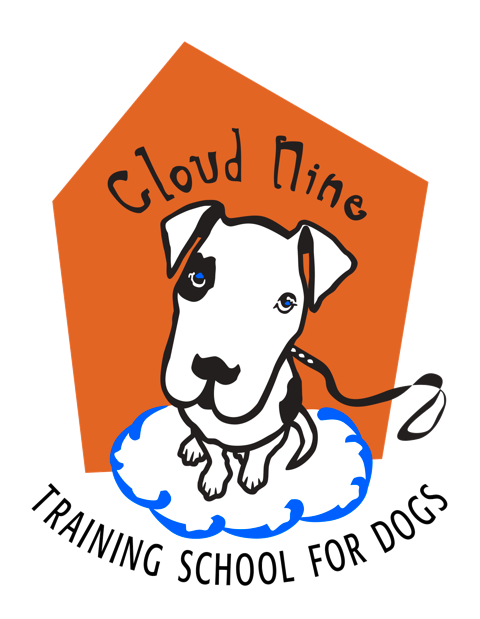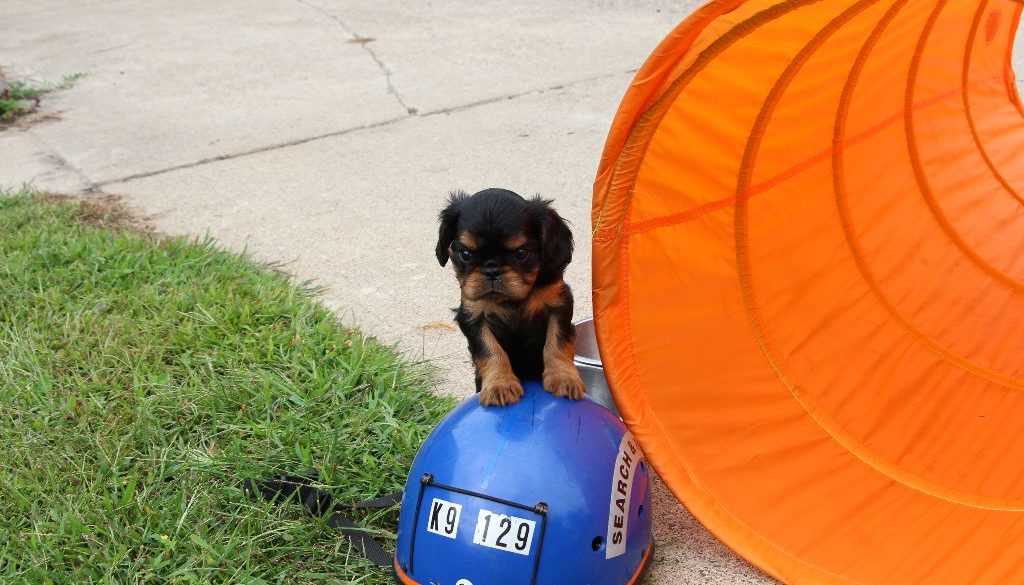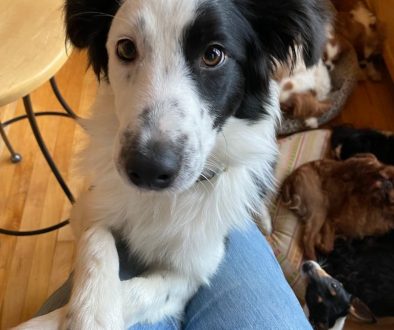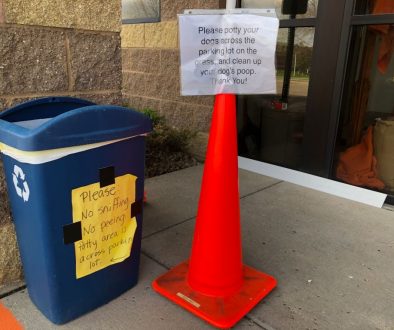Everyone wants a well-socialized dog. But what does that mean?
To most owners it’s a dog that plays nicely with and gets along well with any and every other dog it meets. That’s it. End of definition.
But, is that the best definition of a well-socialized dog? And is that really what you want? A dog who sees another dog and pulls and strains to get close to that dog so it can rough house uncontrollably?
Over the years, I have come to adopt a broader definition of what a well-socialized dog is, and I have come to value a dog who mostly ignores other dogs, who pays attention to and focuses on me, who prefers to be with me more than with other dogs. That means any puppy or dog that joins my family goes lots of places with me, and we train obedience exercises and tricks in all those new places so she learns to cope with and ignore the new noises, the unfamiliar people, the strange surfaces, etc.
When we are out and about, I teach my puppy or dog to pay attention, to be well behaved, and to play with me first everywhere we go so that when distractions – such as another dog – appear on the scene, my dog doesn’t become unruly or unglued, doesn’t jump and bark incessantly, doesn’t become stressed or out of control.
I work long and hard to have a dog that’s well behaved around other dogs so she can be in close proximity to them and not jump on, lunge at, pull toward, bark at or carry on uncontrollably around them. Occasionally I will let my dog meet and greet another dog, but only AFTER I’ve checked that it’s ok with the other dog’s owner and only AFTER I give my dog permission to “visit”.
There’s no denying how important is it to socialize a puppy or dog so that, as much as possible, she is not afraid of noises or unusual things in the environment; so that she is not reactive to vehicles, joggers, cyclists, kids on skate boards, etc.; so that she doesn’t get car sick; so that she can obey commands no matter what distractions are present. It’s a big, ongoing job. It takes a lot of time, work and planning. But it’s well worth the effort.
There is a socializing check list out there, warning people that a new puppy absolutely must meet 100 different people before the age or 20 weeks. That’s a pretty tall order, and I think it’s both extreme and unrealistic. I talked to one new puppy owner who felt like a failure because her puppy was already 16 weeks old and had not met anywhere near that many new people! While it is important to expose your pup or dog new people on an ongoing basis, I think quality and variety are more important than quantity. Having a big/tall, gentle, bearded man with a baseball cap and sunglasses interact with your puppy or dog (following any direction you have to offer), for example, is much more productive than having several people swarm in and surround and overwhelm your puppy/dog and possibly create a bad – or even frightening – experience. Be sure the people you ask to meet and greet your puppy will help, not hurt, your socialization goals.
So get your puppy or dog out and about to do some training, to meet new people and to experience every situation and environment you can think of at a pace she can tolerate (t’s worth mentioning that too much too soon can be too much for some dogs – especially the rescued ones). But please consider that a well-socialized dog does not only mean a dog who will play nicely with others. Unless the reason you added your puppy/dog to your family was so that she will prefer to be with other dogs more than with you, then interacting with other dogs should not be at the top of your socializing agenda.







